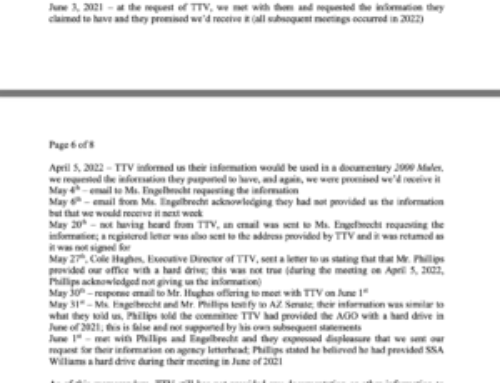This post was originally published on this site
The General Assembly will convene for at least a week to decide — for the first time in modern history under a divided government — how the maps for the eight districts should be drawn.
The lawmakers will do their work under watchful eyes from Washington, where Democrats are grasping to maintain control of Congress, and as other states across the country recast their maps. Republican-dominated legislatures have already started redrawing boundary lines that move toward tipping the scales of power in the U.S. House.
“How’d I get so lucky?” Sen. Nancy J. King (D-Montgomery), a veteran of the process who is chairing the Senate Standing Committee on Reapportionment and Redistricting, said sarcastically as she contemplated the task before her.
“There isn’t a pretty map,” she said. “I don’t care how you look at it. And we’ll never have one that everyone agrees with.”
King said the Senate committee is expected to hold a hearing on the maps on Monday and ultimately will work alongside a House committee to hear testimony and vote on a map to be sent to the full legislature. She said she would be “very surprised, although there’s always a possibility” that changes would be made to the map that the Legislative Redistricting Advisory Commission selected.
The Princeton Gerrymandering Project gave it an F for partisan fairness and geographic compactness, while awarding an A to the map produced by Gov. Larry Hogan’s (R) citizens’ commission.
On Thursday, Hogan encouraged Marylanders to testify during the special session in support of the citizen commission’s map. He charged at a recent news conference that state Democrats intended “to do some of the worst gerrymandering in the country” and said he plans to veto the bill that outlines the new boundary lines.
“We finally have the chance to restore fairness to our political system,” he said in a statement Thursday, “and the Annapolis party bosses are instead scheming to further erode the public trust with disgracefully gerrymandered maps. It is an embarrassment.”
By contrast, top Democratic lawmakers on the legislative committee praised their proposed map earlier this month as offering more compact and contiguous districts compared to the current eyesore. But critics and Republicans have cast doubt on those claims.
Todd Eberly, a political science professor at St. Mary’s College of Maryland, said the pressure to retain every possible Democratic advantage when control of the U.S. House is up for grabs next year likely outweighed the pressure to undo nakedly partisan gerrymandering.
To retain the advantage, Eberly said that meant lawmakers still have to draw twisty-turny districts that, for the most part, are anything but compact. He described the newly proposed 3rd Congressional District as resembling “a bizarre and very painful comb that no one would want to use,” stretching from Montgomery County to the Susquehanna River.
“I would say anyone who looks at 2, 3, 4, 5, 7 or 8 is going to chuckle a bit at the idea that we’ve made these more compact,” Eberly said. “They’re still nonsense districts drawn for a very specific purpose. You’re going to spin it however you’re going to spin it.”
Helen Brewer, a legal analyst with the Princeton Gerrymandering Project, agreed, noting that it was apparent simply by looking at the strangely shaped districts that lawmakers sacrificed compactness for partisan advantage. She noted that the project still took into account Maryland’s unique geography when doling out its F grade.
Like the current map, seven of the eight districts would be safely Democratic in a state where, according to 2020 state voter registration data, approximately one-fourth of voters are registered Republicans. The map’s proposed 1st District — which would stretch across the Chesapeake Bay to include parts of blue Anne Arundel County — would likely be a toss-up, while the Princeton Project rates it as leaning ever so slightly Democratic.
“In comparison to the citizens’ commission [map], it’s not apparent there is much of a reason to have these really outlandish shapes drawn when the map with those really wiggly shapes is the one producing an unfair partisan outcome,” Brewer said.
Not all Democrats in Congress would support an 8-0 outcome. Rep. Kweisi Mfume (D-Md.) told a WBAL radio host earlier this month that he would not support efforts to inch toward an 8-0 map, fearing too many Marylanders’ political viewpoints risk being “locked out” of the democratic process. “If it were the other way around, and Democrats were one-third of the population,” Mfume said, “and they put forth maps or started moving toward an 8-0 representation, we’d be jumping up and down in arms.”
Mfume on Thursday, though, declined to comment further on the proposal before the General Assembly, noting it was in the legislature’s hands and preferring to let the public hearings take their course.
Rep. Jamie Raskin (D-Md.) said lawmakers’ proposed map underscored to him the need to pass the For the People Act, a measure Republicans filibustered in the Senate that would have required independent commissions to handle redistricting.
Still, Raskin argued that pursuing a Democratic advantage in the Maryland map was necessary because Democrats could not afford to unilaterally disarm; Republicans control far more state legislatures in charge of redistricting than Democrats do.
“I wish we had gotten out of the gerrymandering business. But these are the terms the Republican Party wants to fight on, so given that, we should do everything we can to maximize Democratic performance in Maryland as we have been gerrymandered into near oblivion in states like North Carolina, Ohio and Georgia,” Raskin said. “Democracy itself is at stake in the coming elections” — noting his lone Republican colleague, Harris, “sided with insurrectionists.”
Eberly said that Democrats would still face an uphill climb to try to oust Harris under the proposal the General Assembly is considering. Although Trump won the district by more than 19 points in the 2020 election, Biden would have won the proposed district by just 0.3 percentage points.
In a statement to The Washington Post, Harris said that he was pleased that at least the Eastern Shore was kept intact in the lawmakers’ proposal, he but lamented that the General Assembly sidestepped Hogan’s citizen commission.
“I was hopeful that the General Assembly leadership would follow Gov. Hogan’s lead with a citizen-led nonpartisan redistricting process. Instead, we may have districts stretching from the Susquehanna River to Montgomery County that are called shared communities of interest,” he said, referring to the 3rd Congressional District.
In addition to finalizing the new map, the legislature is expected to override Hogan’s veto of a measure that would strip the governor of his role in paroling inmates serving life sentences and a bill that would decriminalize needles, syringes and other drug paraphernalia.
Lawmakers also would take up two immigration reform measures that would shut down the state’s privately-run centers that hold detainees for federal immigration officials and would ban the Motor Vehicle Administration from sharing personal information, including facial recognition data, with immigration officials.
“These bills are going to change the lives of immigrants … Their lives are at risk,” said Jossie Flor Sapunar, a spokeswoman for CASA, a grass-roots immigrant advocacy group. “We can’t miss this moment.”
Hogan vetoed about 20 bills during the regular session earlier this year, including measures on collective bargaining, greater investment in mass transit and legislative oversight of emergency procurement, that could be taken up. Lawmakers are also expected to select Del. Dereck E. Davis (D-Prince George’s), the chairman of the House Economic Matters Committee, as treasurer. Davis was recently recommended by a legislative panel to be considered for the position.
Hogan also is calling on lawmakers to consider a package of emergency bills he recently proposed to contain the surging violence in Baltimore City. The bills call for stricter penalties for illegal gun possession and straw purchases — the buying of guns on behalf of people barred from owning them and a requirement that the sentences handed out by judges for violent offenders are tracked and published.
Hogan said Senate President Bill Ferguson (D-Baltimore City) expressed concern about the surging crime but also conveyed reservations about taking the bills up during the special session.
“I’m sure they are going to be working on trying to override some common sense vetoes that most people in Maryland agree with me on,” said Hogan, during a news conference last week on the coronavirus pandemic, without elaborating on where his mandate came from. “And I explained to him that they would be making a mistake if they go against the overwhelming will of the voters. I’m not sure if I convinced him on all of them.”



